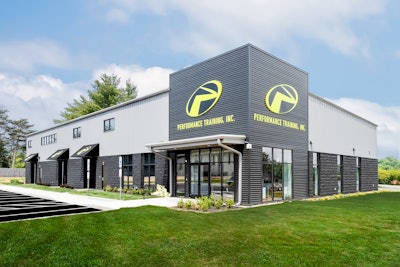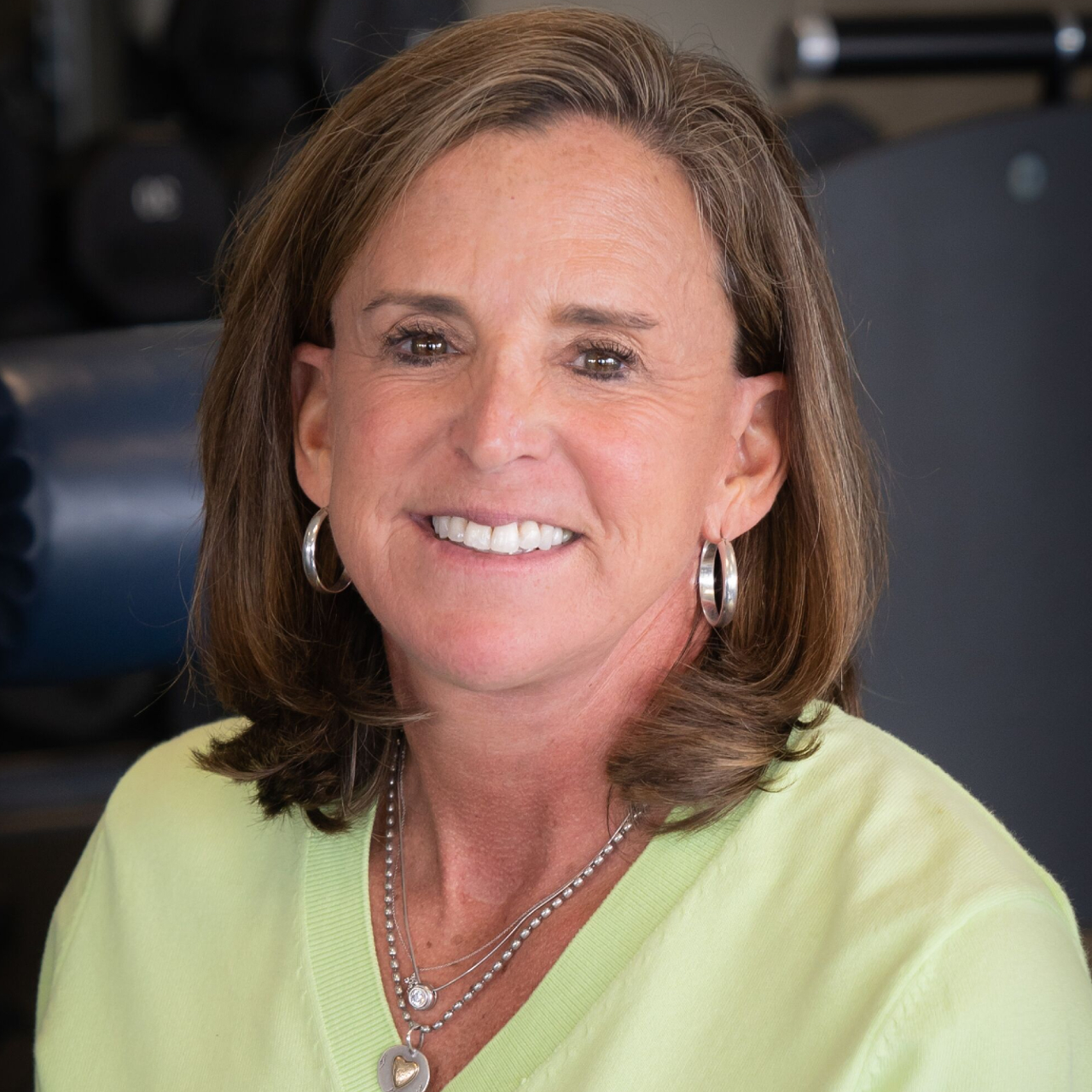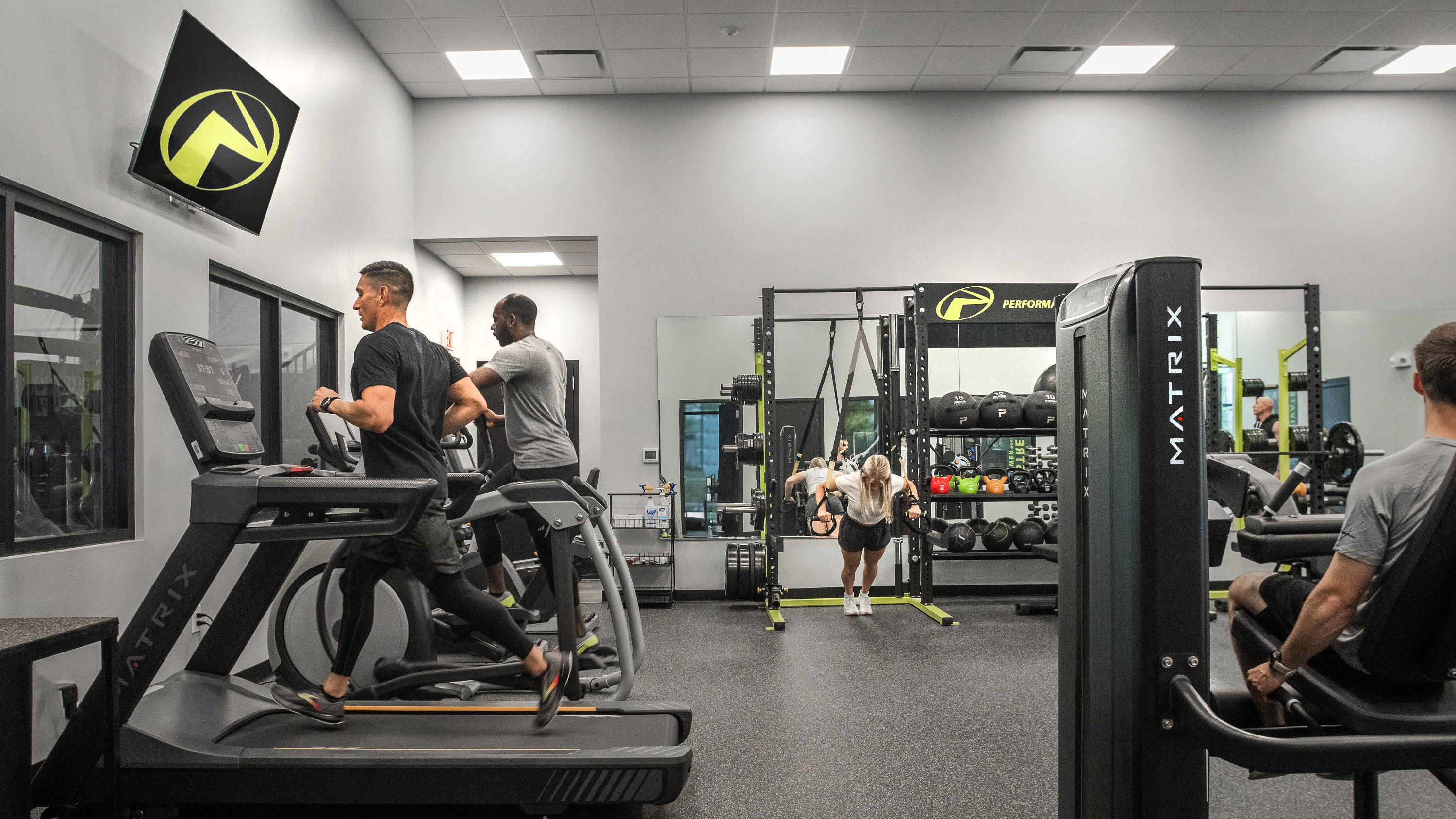
Arriving at Virginia Tech as an undersized basketball recruit in the early 1980s, Jackie Ansley was introduced to performance training for the first time in her life. Her new approach to becoming the best starting point guard she could be put 35 pounds of muscle on her frame and new career ideas in her head. After coaching elite high school teams (and several eventual Division I collegiate players) in and around Knoxville, Tenn., she founded Performance Training, Inc. (PTI) in April 1997. The company now employs more than 40 professionals, consults with nearly two dozen fitness-focused enterprises, and operates out of a state-of-the-art, 9,500-square-foot home base that opened in Knoxville in February 2022. Here, Ansley explains her professional ascent and her approach to success.
 Jackie Ansley
Jackie Ansley
How did you go from earning a degree in education with an emphasis in math in 1985 to founding your own fitness brand in 1997?
Originally, I thought I was going to go more toward the physical therapy direction. Then I played college basketball. And at that time, practice was the most important. Coaches didn’t really work around classes. So, at that time, I just changed my major. Coaching and teaching were things I had a passion for, so I changed my major and even the electives were more of the anatomy, physiology. And then, as an athlete, I was always the one who did all the summer workouts — the lifting, the running, the conditioning part of it — because I never really did that until I got in college. And then I coached 10 years, and my teams were very talented. But the other part of it is we lifted and we ran. And I would meet with any strength coach so I could find out the best ways to coach my teams as far as the strength conditioning goes. At the time, the best strength coach that I knew of worked with the Lady Vols. I met with him and tried to pick his brain for what he did at the time, which was the best. What everybody did then and what we do now is totally different. But you’re trying to emulate what you see as the best in the field, and that was the best at the time. Then, after 10 years of coaching, we had some teams that were highly ranked in the nation. ESPN did a big story. A lot of coaches started calling me and asking me to work with their teams on the Xs and Os side, and also they started picking my brain on the conditioning side, because we were always in shape and we were always strong.

When you were in high school yourself, was it just a matter of conditioning not being emphasized or did you not have access to fitness infrastructure?
It wasn’t really a thing. I mean, we might have done a little bit here and a little bit there, but it wasn’t really a focus for females. I didn’t break 100 until I got to college, and my playing weight was 135. I just started lifting weights and immediately put on muscle. That was what I had to do to be able to play and be competitive at that level.
Performance Training is not your typical fitness facility, is it?
No. We’ve branched in all areas. It’s a very functional facility. We’ve been in our new facility for a year and two months. End of February we moved in and in April we celebrated 25 years of being in business. I built my own facility. It’s a 9,500-square-foot training facility that has a little bit of everything. I have a PT group in here, a climate-controlled space, a gym area with some of the Matrix pin-select, squat racks and some of their cardio. And then I have a huge space with Big Ass Fans up in the ceiling, garage doors we throw open, turf, a rubber area with lots of functional, more Matrix racks and cardio, and the biggest XULT rig that the Matrix team has ever designed — they let me kind of design it. The whole facility is a training facility, so no one has membership. You don’t just come in and work out. It’s literally for clients training one on one. It might be a group, might be corporate, might be a pro soccer team. We might have an 85-year-old over here working on some stability and balance and functional stuff. It started out as purely athletic — again, because of my strength and what I was really passionate about and what a lot of people wanted help doing — to then diversifying ourselves into different areas of need.

Do you have just the one location?
Our home base is at our new facility, but we do have a lot of corporate wellness clients, where we have helped them design their gyms, and we do a lot of work outs at their gyms for their company. We manage some country clubs and their fitness and wellness, and develop that whole program for them, too. And then some of the employees come to us. We give them that opportunity, because they really like coming in here because of the space and all the things we have going on.
Because your facility is appointment-only, education-based training, where do you find your own talent to ensure what you offer is as good as it can be?
As far as our employees, we’ve had them come all the way from the West Coast. Some of the local ones graduate from UT. We see they have great potential in the exercise phys department, they’ll graduate, and we’ll put more time into them. Anybody we get, I don’t care how many years of experience, we put them through a solid 30-day-plus program of education. We go through our whole manual, and it’s really intense. It starts with the athletes, because we have a whole speed-agility-quickness program that I developed. We go through all of that — our philosophy, how we teach it, what we’re looking for, and how we correct things.
Our philosophy is progression. Now, some people are quicker than others, because they know a lot, and some people need a whole bunch of help. And then twice a week — and we’ve done this for 26 years now — we don’t take any clients Tuesday or Thursday from 12:30 to 2 p.m. We try not to let any meetings interfere or anything, because that’s when our whole staff gets together and we have a staff education program. The PT may be talking to everybody about shoulder stability, instability, mobility, strengthening. Or we might give a scenario. ‘Okay, you have a corporate group. They’re accountants, and they’ve been sitting at their desk. A lot of them don’t get up at all. What can we do? We have two people who have knee replacements, we have one who’s got a shoulder (issue), and we have a marathoner in that group. They have 30 minutes. How can we hit them hard and get them back to their desks? We’ll give them all kinds of scenarios, and then we meet with them and help them develop that scenario. Or it might be that we go through and separate the staff, and to the ones who work with the athletes, we may be saying, “Alright, we’re doing a lateral explosion day. I want some lateral quick foot, and then I want some lateral plyometrics,” and we’ll develop that. Say it’s a basketball team. “Okay, what’s the best to do in-season for them?” So we’ll give them different scenarios. We have a whole schedule we put out quarterly, when they need to have their program designed and meet with us, and then, “Okay, now let’s go through it personally. Okay, now let’s present it to the staff.”

You really invest in your people.
We’re paying them to attend for the professional development. And, essentially, they’re working out and hopefully absorbing things that they can carry on to their clients. So, yeah, it’s a huge thing, but I’m committed to really trying to be the best that we can and to grow every trainer the best that I can.
Do you have to have the in-house expertise to handle everyone from the 85-year-old to marathoners in their prime?
It’s really kind of funny. At one time, I personally was working with 35 universities across the United States. And in between that I was flying to Korea or Germany or Poland, working with pro men’s teams. You looked at our staff, and it literally was all former athletes — ripped, very athletic, able to be dynamic — because I truly believe still that if I can’t show a drill, I don’t care who I’m training, if I can’t show it, then I shouldn’t be doing it. For a lot of people, you can’t just tell them how to do it. You have to show them. They have to see it. And if you want them to be dynamic, you better be dynamic. If you want them to be precise, with great posture, you have to have it. And that’s why we go through this education so much, because we really believe you have to be able to show it. We’re just an elite athletic staff. You look at my staff now, and I have yoga instructors, the Titleist Performance Institute golf people, PTs who have worked with some 85-year-olds who just got through with a hip replacement. We have a diverse staff capable of working with a diverse group of clients.
Since you’ve consulted and helped design a variety of facilities, how have you identified which manufacturers fit the needs of PTI facilities?
I’ve had different relationships with different companies at different times, and right now, in my due diligence of going around to each manufacturer that I was interested in, I’ve found that Matrix has provided a great product. Their service is amazing. You can quickly get parts and get something fixed if it is broken. We have a guy here in town — I don’t know how he does all he does, because he seems like he’s worked with every gym — but he’s got a service company, Omega Fitness, and he’s a Matrix preferred vendor. He can order a part and — boom — in 24 hours or 48 at the most that piece is up and working.
And given the education component that you invest in your staff, I assume that there’s training involved in how to teach your clients how to use your Matrix equipment to the fullest advantage.
Hundred percent. And Matrix will invest in us by sending somebody here to help if we need it — “I’ll take your staff through it.” Again, I use their equipment because it’s so sleek. It’s well put together. It’s easy to manipulate, easy to adjust.
What inspired you to get into the equipment design process?
A bunch of stuff. Matrix allows me, from color scheme — we have this certain Pantone green, and I’m very picky about it — to the style to making the monkey bars the way I wanted them to the rope anchors. I totally made it for the usage that I knew we needed. And there are rigs of every company that have these things, but the Matrix team allowed me to put things where I wanted them. They built 3D models for me with aerial views just to show me exactly how the XULT rig would look. They just kept working with me and kept trying to totally perfect it. And honestly, there’s really nothing that I would change. Really, my facility right now, except for the fact that we’re always going to outgrow it, there’s nothing I would change about it. I feel very satisfied. I don’t have a wish list, and we’ve been in a year and two months now.
You got it right.
Or did I take a long time? You know, 25 years in, I finally built it.
One last thing I have to mention. Your logo looks to me like it belongs on the chest of a superhero. I assume you designed it.
Yes. It’s funny you’re saying that because, again, if you could see how long it took me to get to that. I was working with artists at the time I was first developing the company, and I just kept saying, “I want something that’s going to show action.” And I kept saying, “No, that’s not the right green.”
No detail is too small for you.
That’s exactly right.













